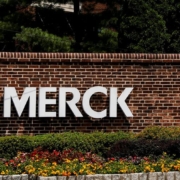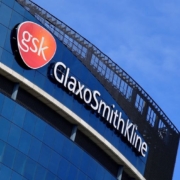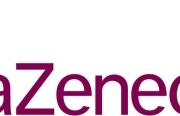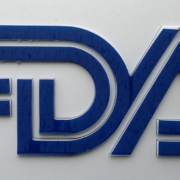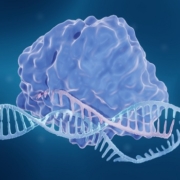Supporting and enhancing the evolving role of MSLs
Supporting and enhancing the evolving role of MSLs
By Jill Padgett, EdD
Medical science liaisons (MSLs) play an essential and prominent role in the pharmaceutical industry. They form a link between pharmaceutical companies and the medical community, working to ensure that information about new drugs and treatments is disseminated accurately and effectively.
The pace of medical research that we’re experiencing currently will lead to increased frequency of product launches, more multi-indication brands, and a strong focus on rare disease and specialty care. As a result, the market landscape and corresponding needs of HCPs are becoming increasingly complex. Indeed, in cases such as those involving rare diseases — where there may be only a small number of specialists — HCPs will place greater reliance on MSLs as a primary resource with respect to innovative therapies.
The landscape is changing in other ways, too. The pandemic has only accelerated the already sizable shift to digital communications. And with the increasingly fast-paced nature of society in general, time-crunched HCPs can be more difficult to engage.
To support the various market changes, the scope of the average MSL function will expand. This article explores the evolving role of MSLs and their value for biopharmaceutical companies, and examines how best to utilize their expertise.
The impact of rare disease on MSLs
A key driver of change is the escalation of therapies in the field of rare diseases. This is accompanied by accelerated timelines as companies rush to get products to market. The increased complexity and urgency can lead to knowledge and communication gaps that MSLs are uniquely poised to bridge. They act as trusted sources for KOLs and HCPs who are facing a range of challenges, including inconsistencies in, and approaches to, care.
Additionally, when it comes to rare disease, there is often minimal data available and few KOLs to consult. This is an area where the MSL role has expanded. They now play a key part in helping to cultivate KOL influencers. There are also other players that MSLs will need to identify because oftentimes, different stakeholders or experts are involved in a patient’s treatment. The MSL’s role now involves understanding what each of those different stakeholders provides in the patient journey, what they need based on their own knowledge of the disease, and their insights and perspectives on the patient’s care.
MSLs must be able to identify major influencers and handle diverse conversations with each stakeholder. They need to simultaneously take on a holistic and micro view of issues, and be able to draw key insights that are most important for the pharmaceutical company.
Another trend driven by the prevalence of rare disease treatments is the need for MSLs to be well-versed in pharmacogenomics, which studies the impact of genetics on patients’ response to medications. This can affect small populations, and knowledge of pharmacogenomics can help MSLs personalize conversations with HCPs and increase confidence in a particular therapy based on how patients are expected to respond.
Typically, pharmacogenomics is not a part of an MSL training curriculum, depending on what therapeutic areas they’re working in. However, in rare diseases, it is a critical component of MSL development. In addition to learning about pharmacogenomics, MSLs must also become knowledgeable in personalized medicine, pharmacoeconomics, and evidence-based medicine. With fewer KOLs, they play an important role in educating HCPs and providing in-depth knowledge on these topics.
Building connections that make better health happen
The MSL role is changing from a practical standpoint, too. HCPs, KOLs, and other stakeholders in the field are rapidly shifting toward digital communications. MSLs need to adapt their approach to avoid missing out on timely and effective collaboration opportunities. This might involve an expanded suite of digital tools, increased personalization, or testing various hybrid communication methods.
Post-pandemic, many KOLs have grown accustomed to the virtual environment, some still prefer in-person meetings, while others favor a mixture. To communicate effectively, MSLs must be more versatile, technically savvy, and armed with the necessary digital assets. One way to help MSLs navigate new communication methods is for pharmaceutical companies to ensure they have all the digital tools (e.g., slide decks and digital brochures) and corresponding training necessary to carry out their jobs effectively.
What’s more, many stakeholders today are multidisciplinary as the integration of commercial, medical, and market access teams continue to proliferate within biopharma companies. This means MSLs must tailor their approach to consider multiple viewpoints within the same conversation. In the same vein, MSLs are becoming more closely involved in understanding unmet patient needs.
Determining influential KOL networks is critical, especially in rare disease. MSLs need to undertake a great deal more research in advance to find out the influencer in these networks, for example, to help determine the patient journey and how these patients are finding experts. The new MSL model involves a patient-centric approach to care since there is a larger network of stakeholders who have shifted to focusing on the patient journey rather than the drug.
How biopharmaceutical companies can support the evolving role of MSLs
To support MSLs in their changing roles, there are measures that biopharmaceutical companies can take. The following are our four recommendations.
- Developing dedicated MSL training plans with an internal certification process
Many companies have some form of MSL curriculum, but it may not be formalized specifically for the evolving needs of the MSL. While MSLs are traditionally well trained on the clinical side, there is a gap when it comes to areas like learning how to apply power behaviors and technology skills. For example, whether they’re communicating in person or virtually, they need to be comfortable and able to communicate well with their stakeholders in each of those environments. Having a well-mapped training process that includes real-world application along with a strong clinical focus would provide MSLs with greater confidence and ability in their role. This can be further strengthened by implementing an internal certification process whereby MSLs must demonstrate fluency in various areas of training. - Encouraging cohort (group-based) learning with real-world application
Setting up group-based training environments encourages MSLs to learn from each other. Cohort learning is a relevant and memorable way to learn. It increases the retention rate and brings their learning to life. Training components might include discussions around scenarios, case studies, patient journey maps, and real-world application activities with a specific emphasis on areas such as pharmacogenomics, personalized medicine, pharmacoeconomics, and evidence-based medicine, in addition to training on digital and writing skills.Most of the existing MSL training programs focus on clinical aspects and knowledge acquisition. Formalizing these cohort, peer-to-peer types of learning activities within their training plan will enhance the application part of their learning experience, which is often missing.
- Training on emotional intelligence and other “soft skills”
A vital component of MSL training that is often overlooked is educating them on power behaviors, such as emotional intelligence. This includes areas such as empathy, influence, active listening, and self-awareness. Often referred to as “soft skills,” these are critical competencies, especially in rare disease. The ability to empathetically communicate and discuss a patient’s journey with a physician may be a clinical conversation, but bringing that empathetic element is important when the goal is to inform and educate. MSLs can add emotional intelligence to other skill-based training, such as critical and logical thinking, storytelling, networking, collaboration, and critical observation. - Providing an easily accessible digital content library
The shift toward digital communications has led to the expectation that MSLs are technologically savvy — whether communicating in-person or virtually. This includes having the digital assets at hand to support important conversations. However, that may not often be true. Companies can assist MSLs by establishing a library of digital content (e.g., slides, charts, and resource lists) that is easily accessible and can be used to engage with their customers. Digital tools and assets can help to clarify and support discussion points, bridge knowledge gaps, and overcome communication challenges.
Supporting the evolution of the MSL
There’s no denying that the role of MSLs is evolving, in particular, due to the industry’s increased focus on rare disease and specialty care. MSLs are having more specialized conversations with a dynamic group of stakeholders, bringing crucial insights back to pharmaceutical companies, and playing a pivotal role in the development process.
As more new drugs targeting rare disease enter the market, the MSL function will continue to expand. Companies can support MSLs in this new landscape by providing the tools and training they need to carry out their roles effectively. This should include mapping out dedicated training plans that include peer-based learning, an emphasis on enhancing their emotional intelligence skills, and providing the digital assets needed to enhance important conversations.
With the right training in place, MSLs can play an optimal role in educating and engaging key stakeholders, ultimately leading to improved patient outcomes.
 |
Jill Padgett, EdD, is head of training at Fishawack Health. |


